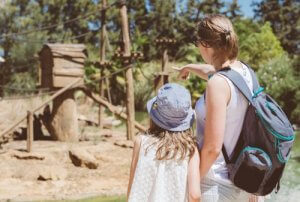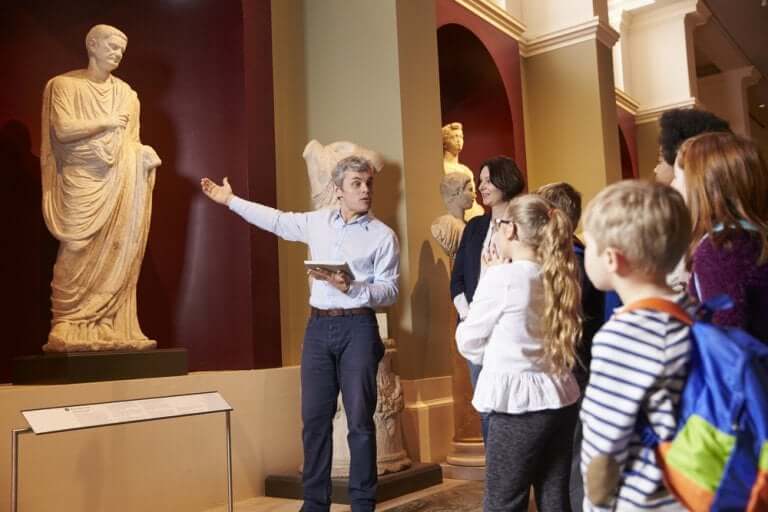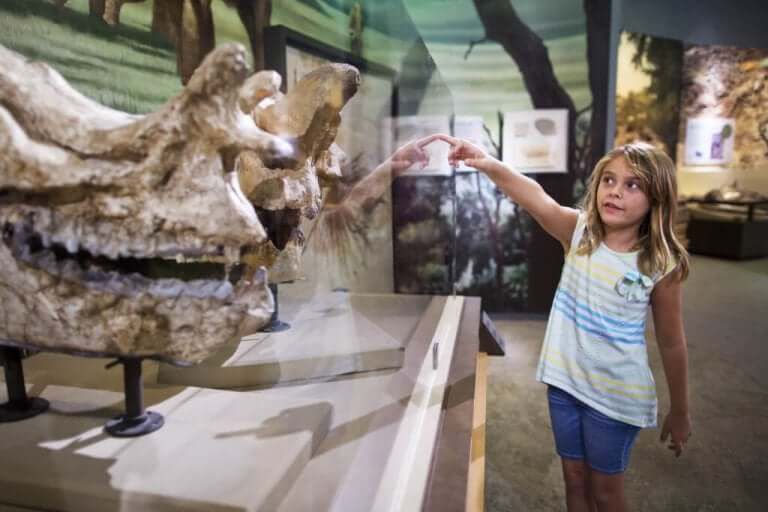How to Teach Children Through Art

Did you know that we can teach children through art in a number of ways and it can bring many benefits to the learning process? We can incorporate art into our educational strategies and use it as a very versatile and effective tool in our lesson planning.
We can cater to children’s specific learning needs and improve their emotional skills and critical thinking through art. In this article, we’ll explain how we can use art as a teaching tool, and thus help children better understand many subjects at school.
If parents and teachers don’t want to use art to teach children, they’ll miss out on a very valuable tool. Teaching through art can give way to novel opportunities in the classroom. Art can stimulate children’s minds and create different ways of thinking and learning.
To teach children through art, you don’t need specialized knowledge in the arts. It’s all about creating a creative syllabus, looking for new things in what you’ll teach. Let’s go through some tips to teach children through art.

Tips to teach children through art
First, choose a work of art
Art is the greatest storyteller of our history. So, any subject in your syllabus can be taught using art. You can start researching museums – most have websites. Download pictures, dance videos, music concerts, etc.
To help you out, focus on these tips when choosing works of art:
- How does this artwork relate to our syllabus?
- Does this artwork pique my interest?
- How can this relate to my children’s/student’s lives?
If the artwork you choose answers “yes” to all of these questions, then you can start your research.
Create open-ended questions
When you start creating questions, focus on what’s known as “open-ended questions.” If you’re capable of creating a question with, at least, three possible answers, that’s an open-ended question. It’s not about getting a good or bad answer.
Open-ended questions can inspire creative and critical thinking in children. When you’re capable of involving your students in researching works of art, you teach them to see the world in a new way. It’s great because they can also enjoy their classmates’ different points of view.
After asking these questions, watch and encourage your students to use new evidence, like visual evidence, when developing their ideas.

The artistic connection
Many works of art include and deal with different subjects that students may be surprised to realize. For example, math is related to music. In a way, music is mathematical.
Thus, start by finding mathematical sequences in music and use this in your classroom. The same thing happens with dance. There are patterns you can explore and learn about.
Good subjects to teach children through art
You can pick an artist’s portrait and ask a general question. This creates connections between the artwork, the syllabus, and your students’ lives. These kinds of subjects are usually effective. They make up a good point of view to start a syllabus in an alluring way.
To do this, you could start by reading a book you’ve talked about in class. Look into the author’s connection with the portraits. Relate them to the book’s characters and develop your syllabus through this.

Go beyond the classroom
It’s worth considering leaving the classroom and taking your students to another setting. Whenever possible, take your class to visit museums, art galleries, shows, theaters, concerts, and be close to the arts. Experiencing art in person is much better than seeing, hearing, or getting to know it through a screen.
You can also approach local artists. Some may even have special programs for schools, or you could create one with them. Many artists will be delighted to talk to young people about their art and work.
In short, be creative. Keep relating the arts to your subject matter, and keep bringing art into the classroom in effective and relevant ways. Remember, this can open your student’s minds. And don’t let learning stay in the classroom, you can go much further.
Did you know that we can teach children through art in a number of ways and it can bring many benefits to the learning process? We can incorporate art into our educational strategies and use it as a very versatile and effective tool in our lesson planning.
We can cater to children’s specific learning needs and improve their emotional skills and critical thinking through art. In this article, we’ll explain how we can use art as a teaching tool, and thus help children better understand many subjects at school.
If parents and teachers don’t want to use art to teach children, they’ll miss out on a very valuable tool. Teaching through art can give way to novel opportunities in the classroom. Art can stimulate children’s minds and create different ways of thinking and learning.
To teach children through art, you don’t need specialized knowledge in the arts. It’s all about creating a creative syllabus, looking for new things in what you’ll teach. Let’s go through some tips to teach children through art.

Tips to teach children through art
First, choose a work of art
Art is the greatest storyteller of our history. So, any subject in your syllabus can be taught using art. You can start researching museums – most have websites. Download pictures, dance videos, music concerts, etc.
To help you out, focus on these tips when choosing works of art:
- How does this artwork relate to our syllabus?
- Does this artwork pique my interest?
- How can this relate to my children’s/student’s lives?
If the artwork you choose answers “yes” to all of these questions, then you can start your research.
Create open-ended questions
When you start creating questions, focus on what’s known as “open-ended questions.” If you’re capable of creating a question with, at least, three possible answers, that’s an open-ended question. It’s not about getting a good or bad answer.
Open-ended questions can inspire creative and critical thinking in children. When you’re capable of involving your students in researching works of art, you teach them to see the world in a new way. It’s great because they can also enjoy their classmates’ different points of view.
After asking these questions, watch and encourage your students to use new evidence, like visual evidence, when developing their ideas.

The artistic connection
Many works of art include and deal with different subjects that students may be surprised to realize. For example, math is related to music. In a way, music is mathematical.
Thus, start by finding mathematical sequences in music and use this in your classroom. The same thing happens with dance. There are patterns you can explore and learn about.
Good subjects to teach children through art
You can pick an artist’s portrait and ask a general question. This creates connections between the artwork, the syllabus, and your students’ lives. These kinds of subjects are usually effective. They make up a good point of view to start a syllabus in an alluring way.
To do this, you could start by reading a book you’ve talked about in class. Look into the author’s connection with the portraits. Relate them to the book’s characters and develop your syllabus through this.

Go beyond the classroom
It’s worth considering leaving the classroom and taking your students to another setting. Whenever possible, take your class to visit museums, art galleries, shows, theaters, concerts, and be close to the arts. Experiencing art in person is much better than seeing, hearing, or getting to know it through a screen.
You can also approach local artists. Some may even have special programs for schools, or you could create one with them. Many artists will be delighted to talk to young people about their art and work.
In short, be creative. Keep relating the arts to your subject matter, and keep bringing art into the classroom in effective and relevant ways. Remember, this can open your student’s minds. And don’t let learning stay in the classroom, you can go much further.
All cited sources were thoroughly reviewed by our team to ensure their quality, reliability, currency, and validity. The bibliography of this article was considered reliable and of academic or scientific accuracy.
- Cohen, Elaine Pear, y Ruth Straus Gainer. Art: Another language for learning. Heinemann, 361 Hanover Street. Portsmouth. 1995.
- Nicola Giardina. The More We Look, the Deeper It Gets: Transforming the Curriculum through Art. Indie Bound. 2018.
This text is provided for informational purposes only and does not replace consultation with a professional. If in doubt, consult your specialist.








